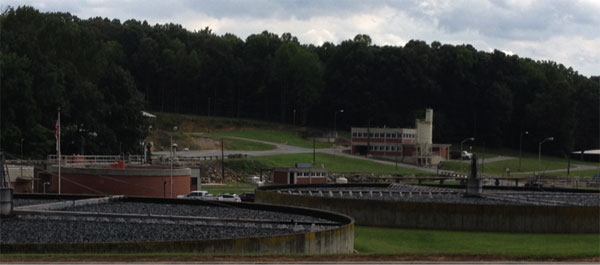How Asheboro is tackling waste-to-energy projects
- Aug 13, 2015
Like many wastewater treatment facilities, the Asheboro Wastewater Treatment Plant, is under constant pressure to do more with less.
Already, the facility has cut in half the amount of electricity it uses to run the blowers in its two aeration tanks.
But the facility is now looking at some additional ways to save money. At the top of its to-do list is a waste-to-energy project that whose potential benefits include three big outcomes:
- - Allow the plant to reduce its energy costs by generating its own electricity
- - Reduce waste disposal costs by creating waste that can be sold
- - Process even more waste from customers, including food scraps and grease collected in grease interceptors
Making gas

The key to this project is to re-engineer the plant’s digesters. Now, the plant runs two anaerobic digesters. Both operate in the mesophilic range — 98 to 100 degrees Fahrenheit. They want to convert the primary digester to operate using a thermophilic process.
Both processes produce methane, and both produce sludge (or, officially, biosolids). But here’s the rub: The mesoophilic unit produces Class B biosolids that the Asheboro plant must spend more than $100,000 per year to dispose of properly. A themophilic unit can produce a cleaner sludge, a Class A biosolid, that can be spread on food crops and even used in residential gardens. The thermophilic process, by making a cleaner biosolid, also generates more gas.
The Class A biosolids could be sold. If the plant could convert its process to produce Class A biosolids, the waste would go from a cost center to a source of revenue. But the higher temps required for thermophilic digestion mean higher energy costs.
Fortunately, one of the main byproducts the digesters produce is gas — methane gas. And that gas could be burned to produce energy and/or keep the digesters at the optimal temperature.
The plant is now in the midst of re-engineering the methane storage cap on its primary digester. (The original methane cap was installed in 1962, when the plant was first built, but that cap no longer functions.)
Once the cap is in place and the plant can capture methane from its digester more effectively, the next step will be to re-use the methane to heat the biosolids in the digester tank.
That, city officials hope, will allow them to cost effectively produce Class A biosolids and eliminate or almost eliminate their costly Class B waste.
Beyond changing how their anaerobic digesters work, plant operators are also planning to experiment with feeding additional waste — beyond what’s already in the wastewater — to their digesters.
At the top of their list is common kitchen waste: food scraps and fats, grease and oils found in grease traps. Potentially, the plant could arrange to collect those from restaurants, school cafeterias and other commercial and institutional food service facilities.
If they can successfully handle that waste in their digesters, that likely would mean they could produce more methane and more of the revenue generating Class A biosolids.
Of course, doing all that will take a series of experiments and trials. The plant’s primary goal remains, of course, to treat wastewater.
“What’s exciting about wastewater now,” says Michael R. Wiseman, the plant manager, is that “it’s taken leaps and bounds as far as what we can do, what we can measure.”
The Asheboro Wastewater Treatment Plant keeps moving along with the field.






